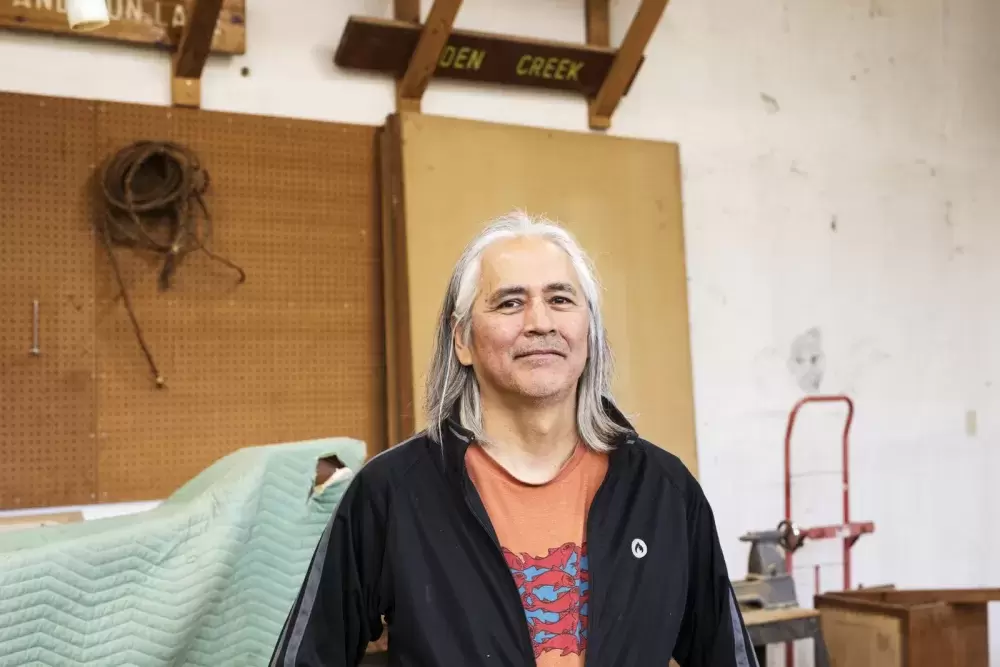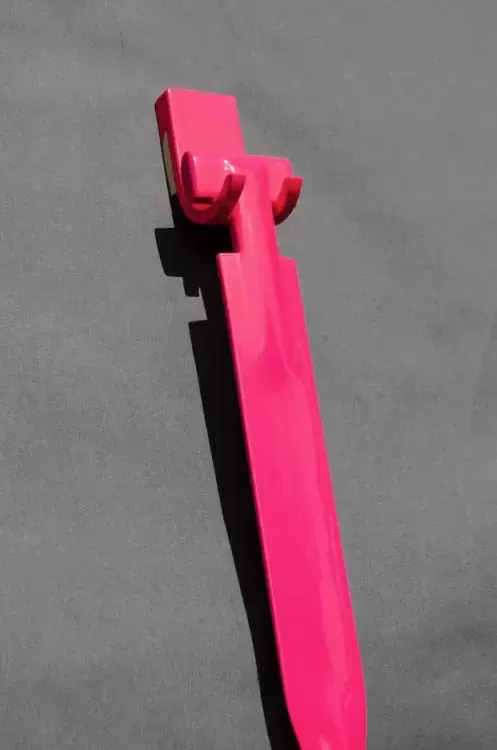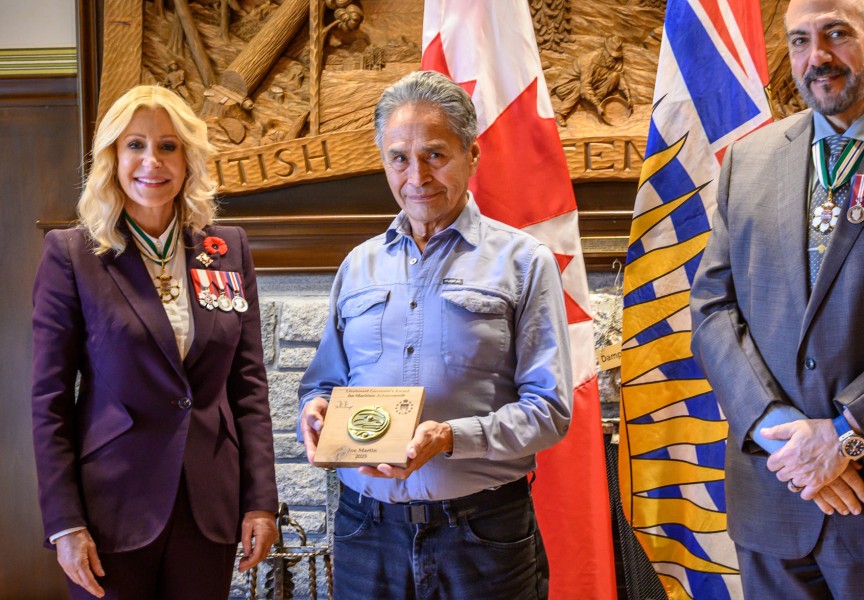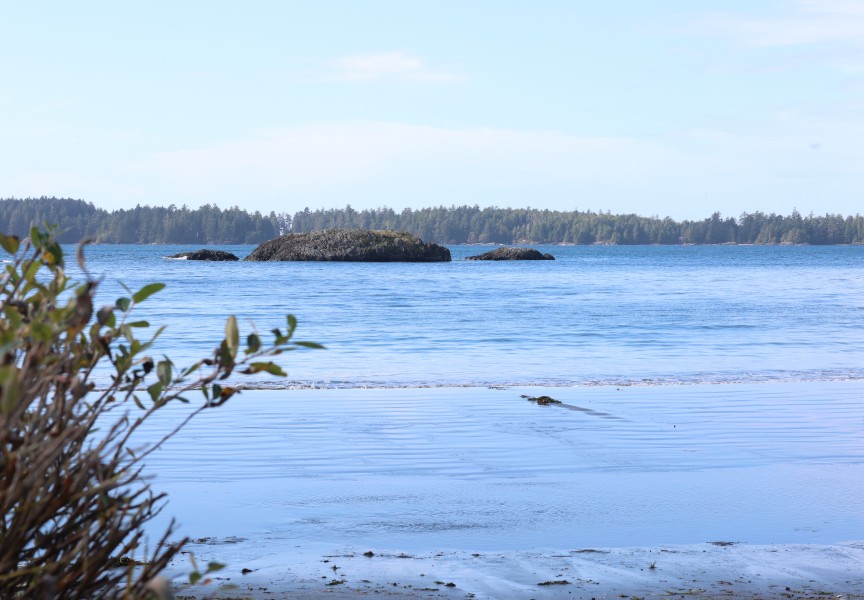Hupacasath First Nation artist Klehwetua Rodney Sayers was granted one of three Jurors’ Choice Awards during the Salt Spring National Art Prize’s (SSNAP) ceremony on Oct. 23.
The $3,000 prize was selected by Art Gallery of Nova Scotia senior curator David Diviney and recognized Sayers’ piece, “Hot Rod Pink.”
As one of Canada’s largest visual arts competitions, SSNAP received over 2,750 submissions from across the country that were narrowed down to 52 finalists.
Sayers was among them for the second time in the four years it’s been running.
“It’s always satisfying when a curator reads the work and understands it at a deeper level,” said Sayers. “It's not just a thing to be looked at. It has a deeper context.”
“Hot Rod Pink” is a continuation of Sayers’ investigation into the notion of traditional First Nations art, paired with his fascination with hot rod tradition.
The sleek, hot pink paddle is around the twelfth in his ongoing series that intersects Nuu-chah-nulth roots with his Port Alberni upbringing.
SSNAP’s founding director, Ronald T. Crawford, said SSNAP honoured the “creative fortitude of artists across Canada.”
"I’m thrilled to see such a diversity of themes, ranging from COVID-19, to reckoning with the past and exploring personal identity both by Indigenous artists and those from immigrant communities,” he said in a release. “It’s wonderful to see the commitment of artists to experiment, to explore, and to share their stories.”
Through making art, Sayers said he is contributing to the traditions of history keeping.
“I keep working for personal satisfaction and to try to have a deeper understanding of what the ancestors must have been thinking, and the challenges they faced in the art making process,” he said.
Sayers said he often reflects on his privileges as an artist. He has a studio that is warm, with power. His ancestors worked in adverse conditions outside in the rain.
“I don’t take that for granted,” he said. “It is a responsibility and a privilege.”
The Salt Spring National Art Prize provides a platform for “like-minded people" to come together, said Sayers.
“It’s always important for artists to come together … and talk about their practices, thought processes, and how they see our world evolving,” he said. “I keep going on this endeavour because I truly believe artists are going to lead us into the future. I really do believe that artists and art is the way to solve the challenges we are facing.”









